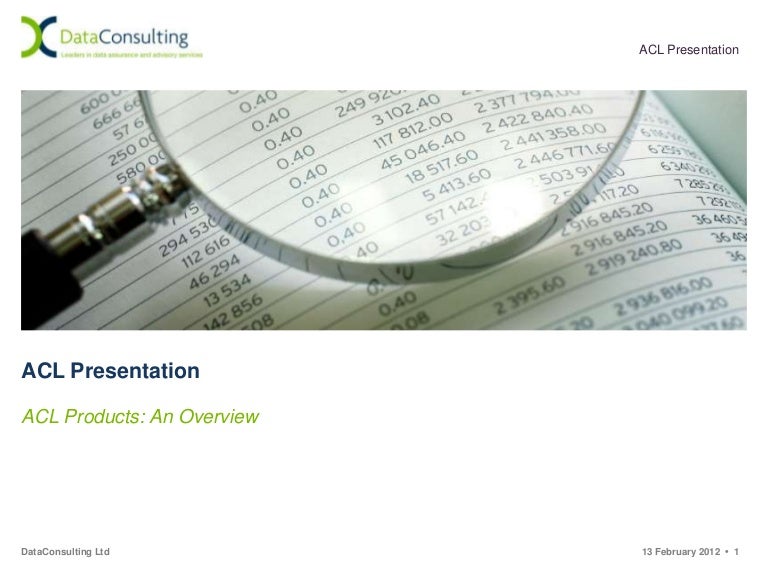

- #Acl audit software access how to#
- #Acl audit software access full#
- #Acl audit software access windows#
#Acl audit software access windows#
The Windows message pump filters messages based upon the integrity level of the message. "System" and "high" labels are used to protect critical system resources.

This integrity label is used to establish the "low" label that marks the Internet Explorer process used in LowRights Internet Explorer. With Windows Server 2008 and Windows Vista, SACL has been extended to carry integrity-level information. Note that Windows also supports system ACLs (SACLs) for objects and has used SACL settings to establish which events are logged to the audit log for many releases. Whenever an object is accessed, the security descriptor is compared to the principal's permissions to verify that the requested access is allowed. A discretionary ACL (DACL) is a type of ACL where the owners of objects are allowed to change them. ACLs enumerate who (which principal) has what kind of access to specific objects. The information about what a subject (user, process, and so on) is allowed to do to an object or resource is specified in a data structure known as an ACL. They also can specify which object accesses must be logged to the system event log. All named objects in Windows have security descriptors, which provide information about their owner as well as list which users and subjects have specified permissions. Now let's move to a technical discussion of these issues and how they work below the GUI interface presented to the user. This functionality was provided to members of the users group on Windows Server 2008 because some third-party software assumes that these permissions are present, and Microsoft did not want to break app compatibility. Thus you see that normal users are allowed, by default, to create subfolders and add content to these folders from the root of the system drive in Windows Server 2008. This operation requires administrator privileges.įigure 3 Edit View of User Special Rights If you click the Edit button, you'll see another "special" grant to subfolders, shown in Figure 3. Here, members of the users group are allowed to create folders and append data to files in the root of the system drive. Clicking the Advanced button gives a more detailed view of the permissions associated with the users group (see Figure 2).įigure 2 Advanced View of User Rights over Drive C (Click the image for a larger view) When I click on Users under Group or user names, I see that the permission situation is not as simple: the users group on the system in Figure 1 has Read and Execute, List, Read, and so on.
#Acl audit software access full#
If I click on SYSTEM under Group or user names, I see that SYSTEM also has full control. If I open Windows Explorer, select the security tab, right-click on Local Disc (C:), and select Properties, I see that administrators have full control.
#Acl audit software access how to#
Since you cannot appropriately set permissions without understanding what is being done under the surface, I'll start by describing security settings on objects and how they are processed, and I'll follow that with how to set values for them.īefore I delve into the technical details, I want to take a look at the permissions at the root of the system drive in Windows Server 2008 using the Windows access control list (ACL) GUI. Thus, you manage system behavior by setting permissions and rights. The basic security mechanism of Windows involves having a trusted system component check permissions and rights (AccessCheck) before an operation is allowed to proceed. Files, directories, and registry keys are examples of commonly known objects.

Whenever something happens in a system, a principal (which could be a process or thread acting on behalf of a user or service) acts upon objects. Managing the Registry and Its Permissions Interpreting Security Descriptor string_aces Understanding Security Descriptor string_aces

This article uses the following technologies: Understanding Windows File And Registry Permissions


 0 kommentar(er)
0 kommentar(er)
